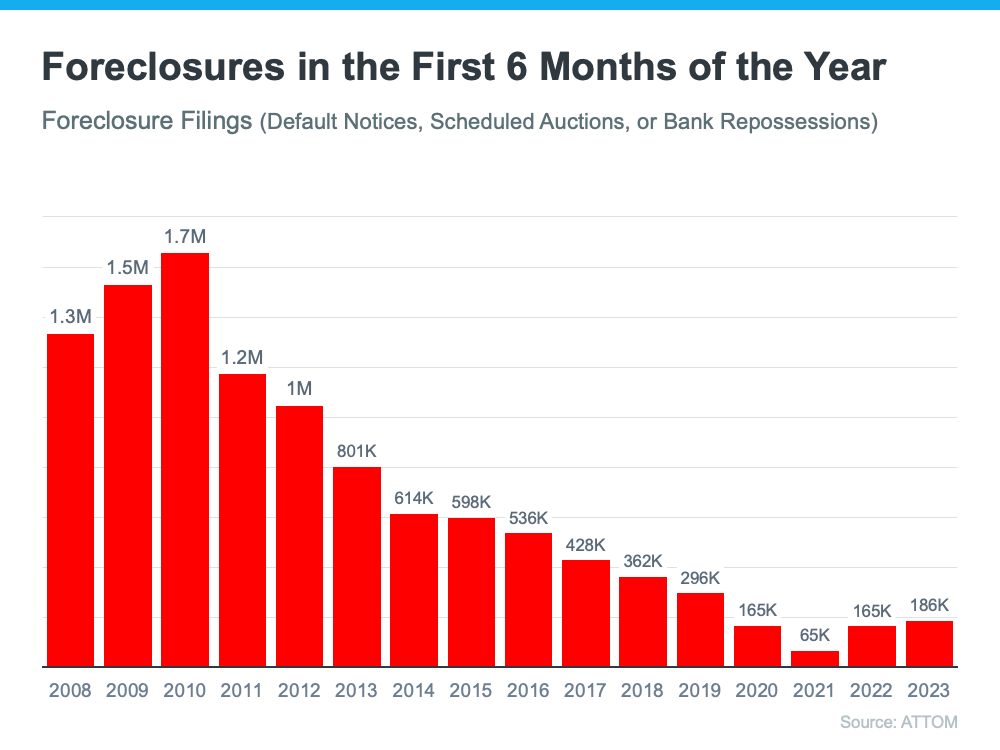Foreclosure Numbers Today Aren’t Like 2008
If you’ve been following the news, you might have noticed an increase in foreclosure headlines in today’s housing market, causing uncertainty for potential homebuyers. According to recent data from ATTOM, foreclosure filings are up 2% from the previous quarter and 8% from one year ago. However, it’s crucial to understand the context behind these numbers to avoid unnecessary panic.
Unlike 2008, when foreclosures flooded the market and caused a housing crisis, today’s situation is different. In the last two years, forbearance programs and relief options helped millions of homeowners stay in their homes during challenging times. Additionally, rising home values allowed homeowners to leverage their equity and avoid foreclosure. As a result, foreclosures remained at record lows.
The recent increase in foreclosures can be attributed, in part, to the end of government moratoriums. However, experts emphasize that this isn’t a repeat of the Great Recession. Most homeowners now have substantial equity in their homes, and lenders are catching up on delayed proceedings from the pandemic. The rise in foreclosures is not alarming, and it’s far from the crisis levels seen in 2008.
To better understand the contrast, take a look at the graph below, showing foreclosure activity for the first half of each year since 2008. The graph clearly indicates that foreclosures have consistently remained lower after the housing crash.

In conclusion, while foreclosure numbers have increased recently, the current housing market is not headed for a 2008-style crisis.
Homeowners are in a better financial position, and the rise in foreclosures is a result of unique circumstances rather than a fundamental market collapse. It’s essential to remain vigilant, but understanding the context is crucial to making informed decisions about the housing market.

